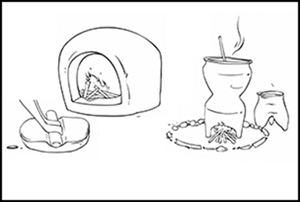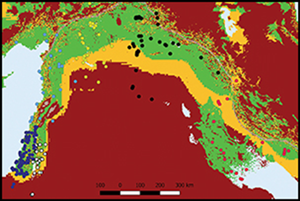Refine listing
Actions for selected content:
1416829 results in Open Access
Problems of Dating Spread on Radiocarbon Calibration Curve Plateaus: The 1620–1540 BC Example and the Dating of the Therasia Olive Shrub Samples and Thera Volcanic Eruption
-
- Journal:
- Radiocarbon / Volume 66 / Issue 2 / April 2024
- Published online by Cambridge University Press:
- 10 May 2024, pp. 341-370
- Print publication:
- April 2024
-
- Article
-
- You have access
- Open access
- HTML
- Export citation
Beyond the Single Tax: Henry George and His Movement - Christopher William England. Land and Liberty: Henry George and the Crafting of Modern Liberalism. Baltimore: Johns Hopkins University Press, 2023. 360 pp. $55.00 (cloth), ISBN 9781421445403.
-
- Journal:
- The Journal of the Gilded Age and Progressive Era / Volume 23 / Issue 2 / April 2024
- Published online by Cambridge University Press:
- 17 May 2024, pp. 260-262
- Print publication:
- April 2024
-
- Article
- Export citation
Iranian Identity and National Oppression: Crafting the Modern Iranian Nation–State
-
- Journal:
- Iranian Studies / Volume 57 / Issue 2 / April 2024
- Published online by Cambridge University Press:
- 22 April 2024, pp. 311-316
- Print publication:
- April 2024
-
- Article
- Export citation
Giant aortic aneurysm repair in a child due to arterial tortuosity syndrome
-
- Journal:
- Cardiology in the Young / Volume 34 / Issue 5 / May 2024
- Published online by Cambridge University Press:
- 01 April 2024, pp. 1156-1158
-
- Article
-
- You have access
- Open access
- HTML
- Export citation
“An Army of Little Mothers”: Progressive Era Eugenic Maternalism and the Medicalization of Motherhood
-
- Journal:
- The Journal of the Gilded Age and Progressive Era / Volume 23 / Issue 2 / April 2024
- Published online by Cambridge University Press:
- 17 May 2024, pp. 213-230
- Print publication:
- April 2024
-
- Article
- Export citation
Kongomania Redux, The Haitian Revolution: David Geggus Responds to John Thornton, Christina Mobley, and James Sweet
-
- Journal:
- The Americas / Volume 81 / Issue 2 / April 2024
- Published online by Cambridge University Press:
- 03 October 2024, pp. 285-296
- Print publication:
- April 2024
-
- Article
-
- You have access
- Open access
- HTML
- Export citation
D’Édesse à Antioche en passant par Jérusalem et Alexandrie. Où situer l’Évangile selon Thomas? Quelques considérations critiques
-
- Journal:
- New Testament Studies / Volume 70 / Issue 2 / April 2024
- Published online by Cambridge University Press:
- 03 June 2024, pp. 249-261
- Print publication:
- April 2024
-
- Article
-
- You have access
- Open access
- HTML
- Export citation
IRN volume 57 issue 2 Cover and Front matter
-
- Journal:
- Iranian Studies / Volume 57 / Issue 2 / April 2024
- Published online by Cambridge University Press:
- 28 May 2024, pp. f1-f4
- Print publication:
- April 2024
-
- Article
-
- You have access
- Export citation
Variation of millet grain size and cooking techniques across Asia between the late fourth and first millennia BC
-
- Article
-
- You have access
- Open access
- HTML
- Export citation
LIN volume 60 issue 2 Cover and Back matter
-
- Journal:
- Journal of Linguistics / Volume 60 / Issue 2 / April 2024
- Published online by Cambridge University Press:
- 11 April 2024, pp. b1-b2
- Print publication:
- April 2024
-
- Article
-
- You have access
- Export citation
LIN volume 60 issue 2 Cover and Front matter
-
- Journal:
- Journal of Linguistics / Volume 60 / Issue 2 / April 2024
- Published online by Cambridge University Press:
- 11 April 2024, pp. f1-f2
- Print publication:
- April 2024
-
- Article
-
- You have access
- Export citation
LTA volume 57 issue 2 Cover and Front matter
-
- Journal:
- Language Teaching / Volume 57 / Issue 2 / April 2024
- Published online by Cambridge University Press:
- 02 April 2024, pp. f1-f4
- Print publication:
- April 2024
-
- Article
-
- You have access
- Export citation
Provisioning urbanism: a comparative urban-rural zooarchaeology of ancient Southwest Asia
- Part of
-
- Article
-
- You have access
- Open access
- HTML
- Export citation
Strange brethren. Refugees, religious bonds, and reformation in Frankfurt, 1554–1608. By Maximilian Miguel Scholz. (Studies in Early Modern German History.) Pp. xvi + 246 incl. 8 ills and 1 map. Charlottesville, Va–London: University of Virginia Press, 2022. £39.95. 978 0 8139 4675 7
-
- Journal:
- The Journal of Ecclesiastical History / Volume 75 / Issue 2 / April 2024
- Published online by Cambridge University Press:
- 04 April 2024, pp. 380-382
- Print publication:
- April 2024
-
- Article
- Export citation
ALJ volume 49 issue 2 Cover and Back matter
-
- Journal:
- Art Libraries Journal / Volume 49 / Issue 2 / April 2024
- Published online by Cambridge University Press:
- 02 October 2024, pp. b1-b2
- Print publication:
- April 2024
-
- Article
-
- You have access
- Export citation
Barrow Necropolis from the 3rd and 2nd Millennia BC in Western Ukraine. A Bayesian Modeling and Isotopic Study
-
- Journal:
- Radiocarbon / Volume 66 / Issue 2 / April 2024
- Published online by Cambridge University Press:
- 29 April 2024, pp. 326-340
- Print publication:
- April 2024
-
- Article
-
- You have access
- Open access
- HTML
- Export citation
Sovereign Debt Restructuring and the Law: The Holdout Creditor Problem in Argentina and Greece. By Sebastian Grund. New York: Routledge, 2022. Pp. xvi, 182. Index.
-
- Journal:
- American Journal of International Law / Volume 118 / Issue 2 / April 2024
- Published online by Cambridge University Press:
- 29 April 2024, pp. 401-409
- Print publication:
- April 2024
-
- Article
- Export citation
A diabolical voice. Heresy and the reception of the Latin Mirror of simple souls in late medieval Europe. By Justine L. Trombley. (Medieval Societies, Religions, and Cultures.) Pp. 218 incl. 4 figs and 4 tables. Ithaca, NY–London: Cornell University Press, 2023. $56.95. 978 1501769610.
-
- Journal:
- The Journal of Ecclesiastical History / Volume 75 / Issue 2 / April 2024
- Published online by Cambridge University Press:
- 04 April 2024, pp. 369-370
- Print publication:
- April 2024
-
- Article
- Export citation
Radiocarbon Dates from the Archaeological Site of Sakas, Bihar, India
-
- Journal:
- Radiocarbon / Volume 66 / Issue 2 / April 2024
- Published online by Cambridge University Press:
- 29 April 2024, pp. 267-279
- Print publication:
- April 2024
-
- Article
-
- You have access
- Open access
- HTML
- Export citation


